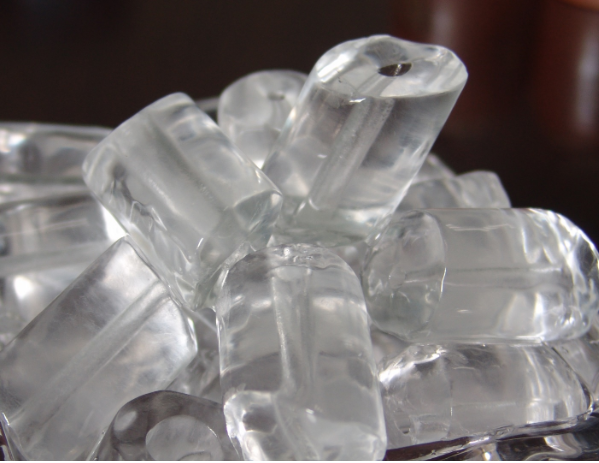Having ice constantly in hand’s reach is a luxury that many of us take for granted. Unfortunately, reality hits us like a truck when we head over to the ice machine, glass in one hand, ready to enjoy a nice cocktail, and we realize that the bin is suspiciously empty. 
How Ice Machines Work
Before delving deeper into the subject of this article, let us briefly discuss how an ice machine works, so you will have an easier time determining what exactly went wrong. Generally speaking, function virtually the same, with slight variations. Water-cooled ice machines, for example, generate ice by maintaining a constant process of heating, cooling, condensation, and evaporation. First, the gaseous refrigerant is transported through a succession of small coils, which pressurize the gas inside and heat it until it reaches an adequate temperature. The refrigerant is then released into a series of larger tubes, cooling the gas and thus triggering the process of condensation and transforming the gas into a liquid. Afterward, the condensation is transported to an evaporator, a component which is constantly covered in water by a separate reservoir. As soon as the water reaches a certain level, it is cooled down below the freezing point, triggering the harvesting cycle, releasing the generated cubes through a series of valves. This entire process is repeated until the ice machine’s bin is full. While this might sound a tad too scientific for some people, it is actually very simple to understand once you get the hang of it. Now that we have briefly covered how ice machines work, it is time to figure out how to solve the most common issues that they go through. If you do end up needed a new maker, ice maker depot has a good selection to choose from.
Ice Comes in Weird Shapes and Sizes
Most ice machines are able to produce all types of ices (cubed, flake, diced, etc). If the shape and size of the ice are off and not in accordance with how you set up the machine, you are probably dealing with some internal mechanical issues. Oversized ice is usually a sign that water is leaking inside the machine. This issue can be easily solved by verifying whether or not the inlet valve is sufficiently tightened – if not, you can adjust it by using a wrench. If the leaks persist, you might have to replace the gasket, or even the valve itself. If the ice is too small, it is possible that the reservoir has a low water flow. The first thing you should do is checking if the water flow is obstructed by dirt and debris build up in the filters. If this does not solve the problem, the cause might be independent of the machine itself, usually in the water supply.
Insufficient Output
A standard commercial ice machine, regardless of type and what compressors they are equipped with (air cooled, water cooled, remote cooled), is capable of producing up to 50 kilograms of ice per day. Anything less than that, coupled with a longer than average production time, could indicate that there is something wrong with the unit. There are several reasons for a low output, but typically, ice machines will start producing less ice when the ambient temperature exceeds 35 degrees Celsius. If the room temperature is adequate, the problem might originate from a broken or a faulty evaporator scale. Sadly, if this is the root cause, these are essential components that can’t be fixed, so you will have to replace them as soon as possible. But more often than not, an ice machine will have a lower output due to a simple clog in the ice bin created by half-frozen cubes that get stuck on their way out. All you have to do is remove the bin and break the ice build-up either with your hands, or an ice pick.
No Ice Production
If your ice machine just stops doing what it was intended to do, the problem might be caused by improper water intake. Occasionally, the lines connecting the ice machine to the water supply will be overwhelmed by a sudden influx of hot water that the ice machine can’t freeze in a timely fashion. As a result, the machine will automatically cease its activity as a safety precaution. You can solve this issue either by restarting the production cycle or bringing down the water pressure from the pipes at normal levels.
Ice machines are extremely convenient utility units to have both in establishments (bars, restaurant, etc.), as well as in domestic households. But ice makers are not perfect, and they occasionally fall victims to technical issues, just like every other utility item out there. Fortunately, most problems can be easily fixed without calling an expert.




